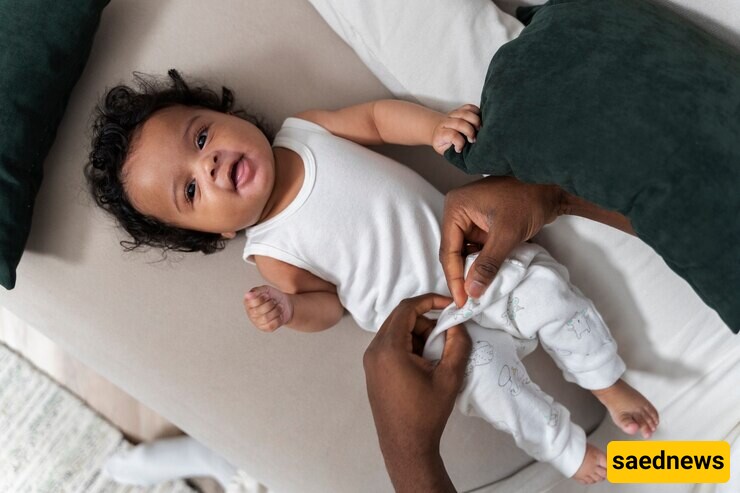SAEDNEWS: Buying children's underwear is one of the most important purchases for kids. When you enter a store to buy children's clothing, you'll find various boys' and girls' underwear, such as tops and different types of children's briefs, available in numerous models and colors.


In children's clothing stores, the shelves with children's briefs and undershirts are often the cutest and attract parents' attention. For this reason, we have several simple and practical suggestions for purchasing and maintaining children's underwear hygiene, which we recommend all parents of infants and children read.
Many parents skip buying briefs for their infants, citing that they use diapers. However, wearing briefs can help keep diapers in place, preventing them from becoming disheveled or leaking urine or feces. Briefs are also essential for infants using simple and rubberized diapers, as they can prevent the rubber from loosening due to movement, crawling, or walking.
Buying briefs for diaper-wearing infants is easy since the fabric doesn't directly contact the baby's skin. You can coordinate colorful or patterned briefs with your child's various outfits. Matching the color of briefs with the socks of girls wearing dresses gives them a more orderly appearance. However, if you notice tiny red spots or redness and inflammation around the groin or waist, your child's skin may be sensitive to the color of the briefs, and it's best to use white or cream-colored ones.
It's better for infants' briefs to be somewhat long-legged to avoid irritating their groin. The "glasses" style briefs available on the market are most suitable for children under 18 months. Cotton briefs with an additional lace bow layer can make little girls look more stylish. Briefs with a wide, soft waistband are better for preventing stomach aches than those with a thin, tight waistband.
Children over 18 months who are no longer wearing diapers need snug-fitting briefs that are the right size for them. When buying briefs for children, make sure to match their size. For diaper-wearing children, choose briefs at least two sizes larger to accommodate the diaper's bulk without causing tightness or discomfort.
Since much of the fabric in these clothes doesn't contact the skin of diaper-wearing infants, you can consider plastic or non-cotton briefs without worry. However, in warm weather when sweating increases, use cotton briefs instead of synthetic fabrics, as heat and sweat can increase skin contact with the fabric, causing rashes and redness around the waist and groin.
Typically, children's briefs are light-colored, and improper washing can cause discoloration. Don't machine-wash them; hand wash with soap powder instead. Proper rinsing prevents detergent residue and skin irritation. To avoid contamination, don't dry children's briefs in open spaces. Hang them on a clothesline near a sunny window instead.
Training briefs are designed for children transitioning from diapers. Their inner layer resembles that of complete diapers, but they look like regular briefs. Children wearing them feel as though they're not wearing diapers, but any accidental leakage won't reach their pants or the carpet. Training briefs are suitable for children ready to control their bladder and bowel movements, but if an accident occurs, remove and wash them with warm water and soap immediately. You can purchase training briefs from pharmacies.

